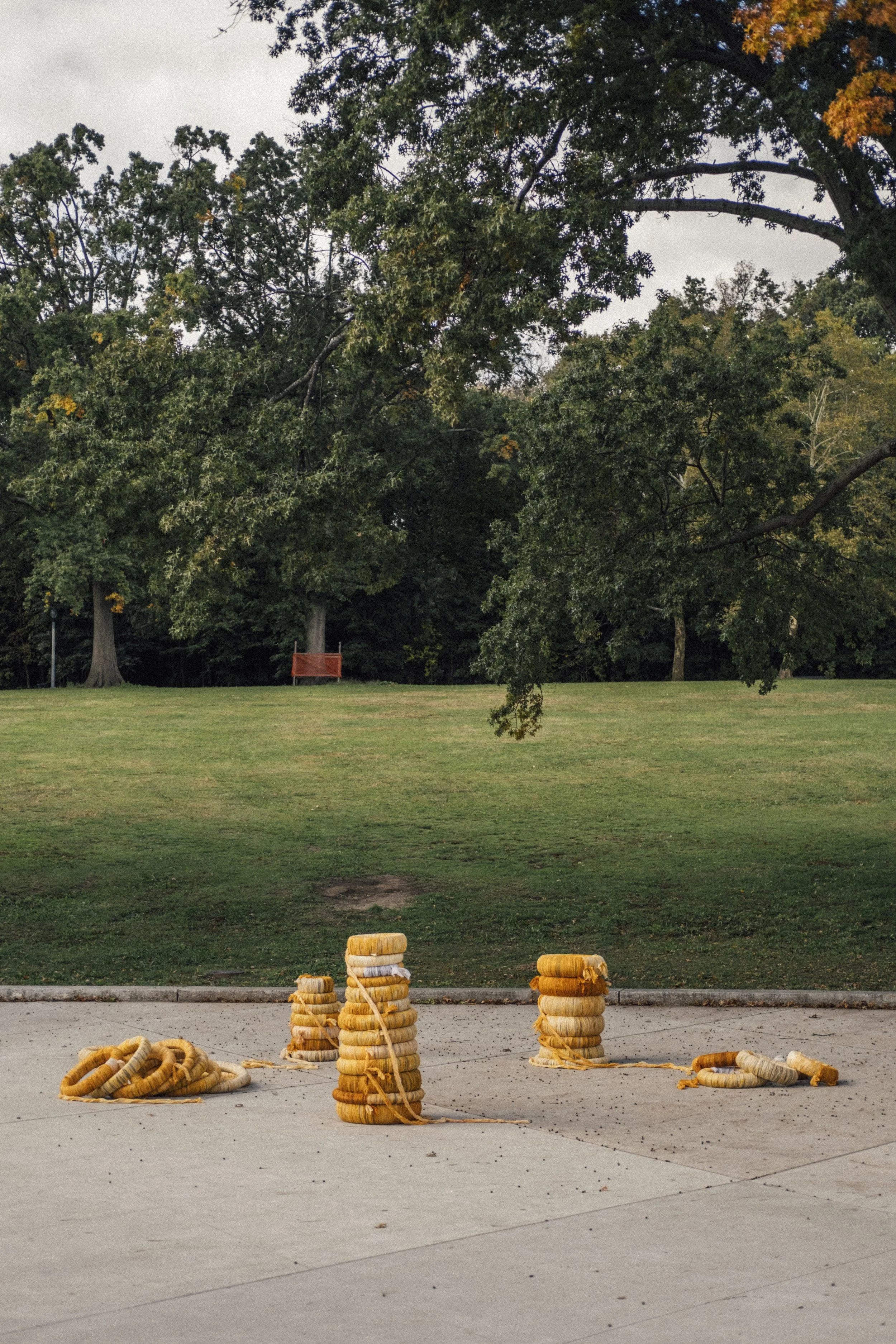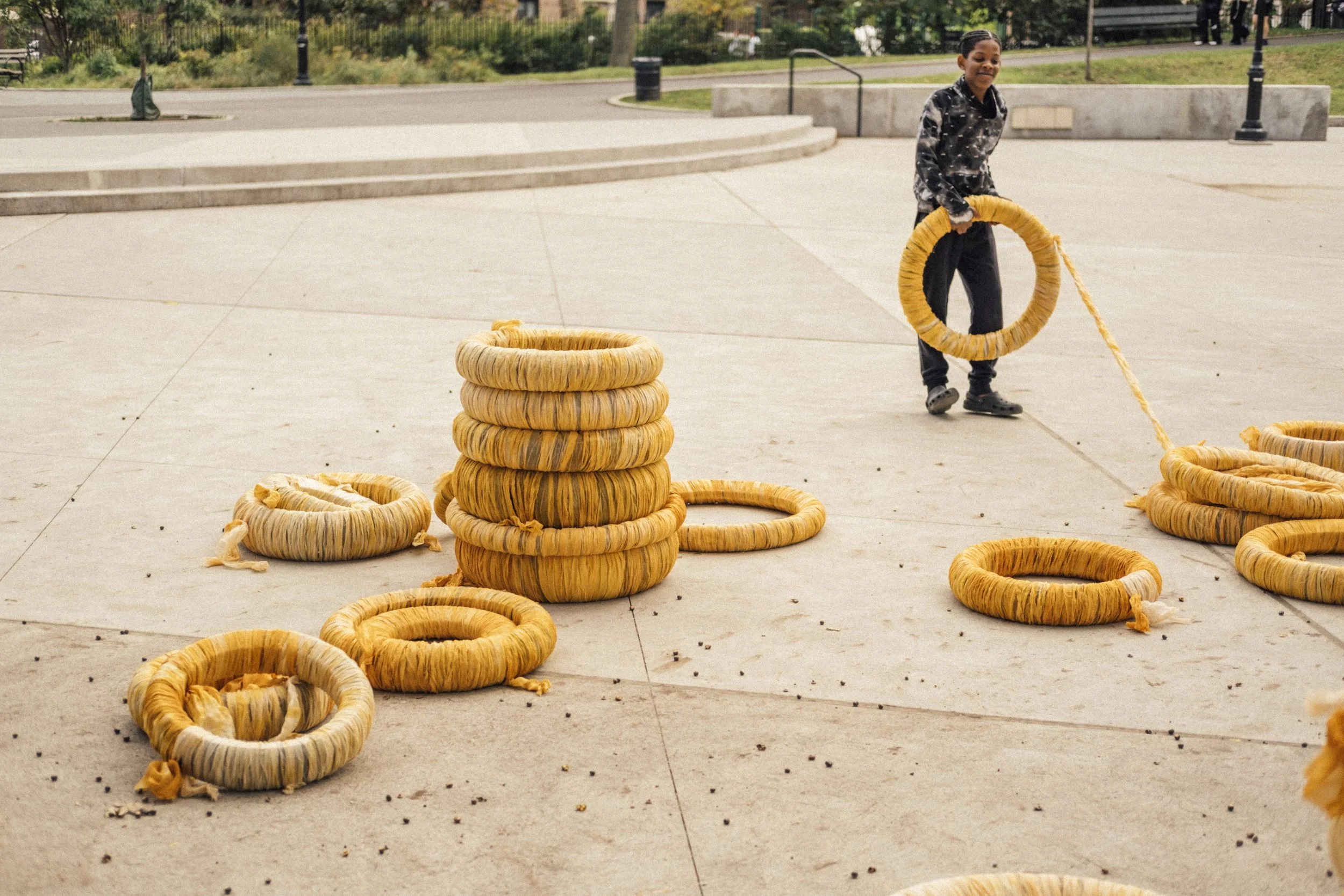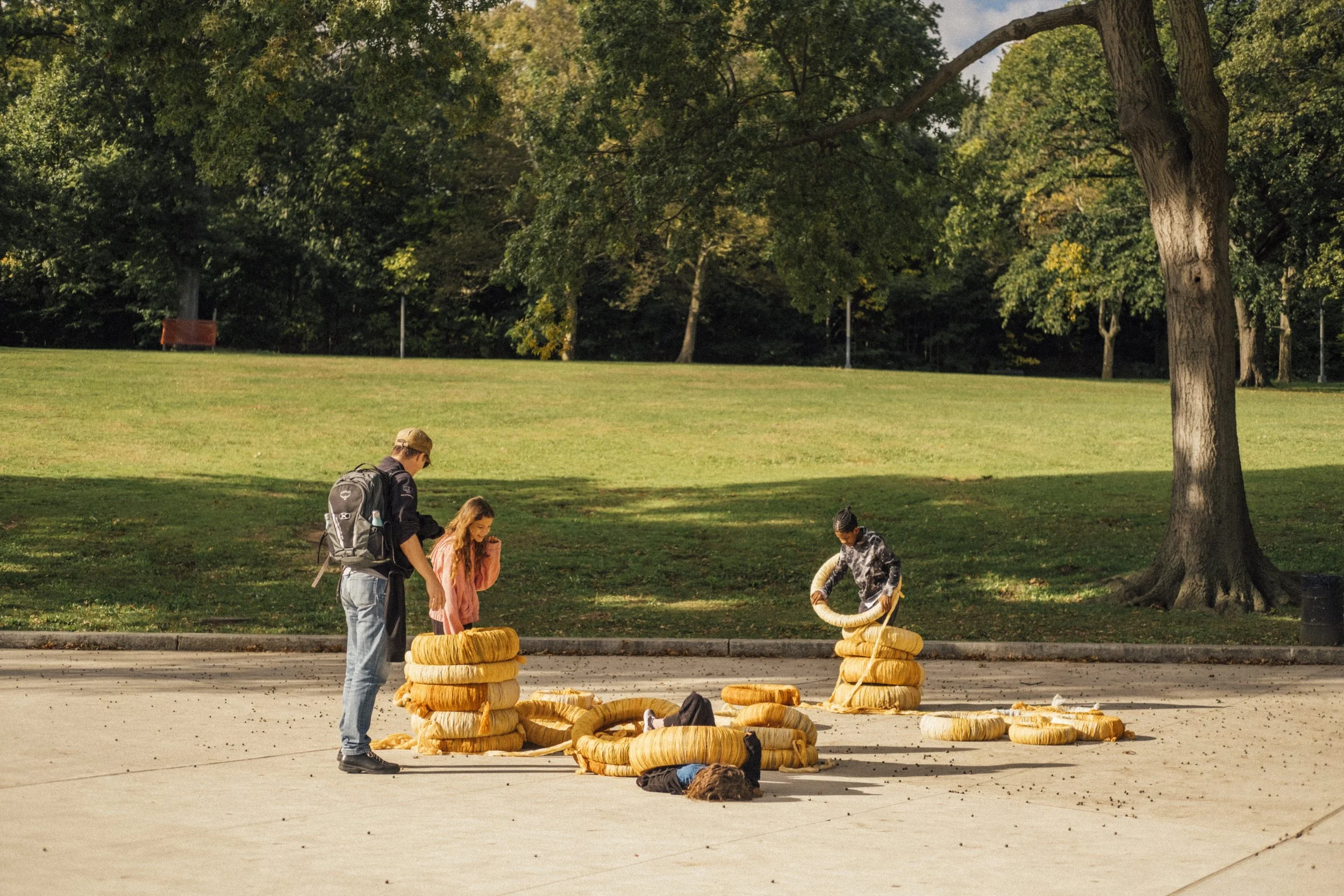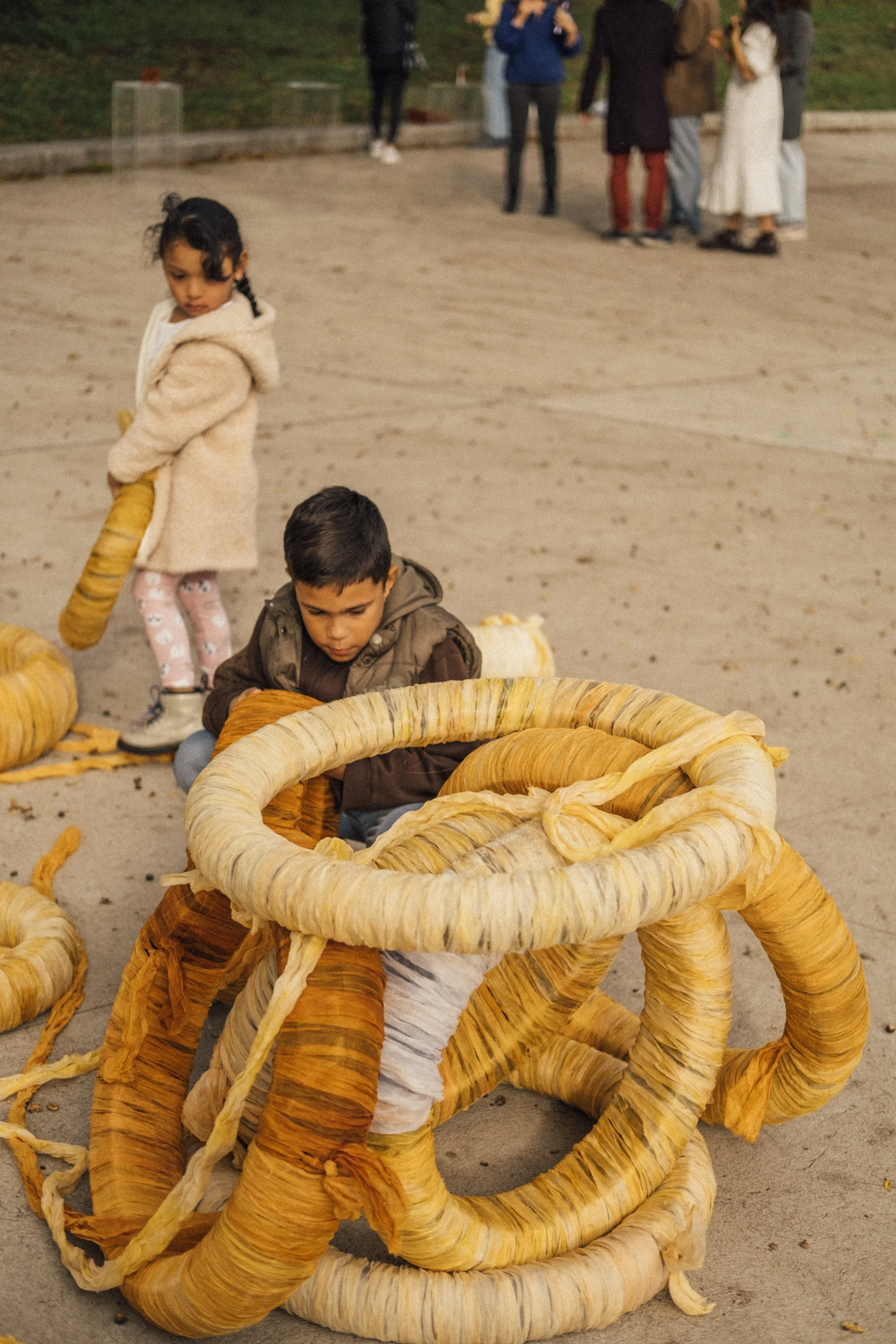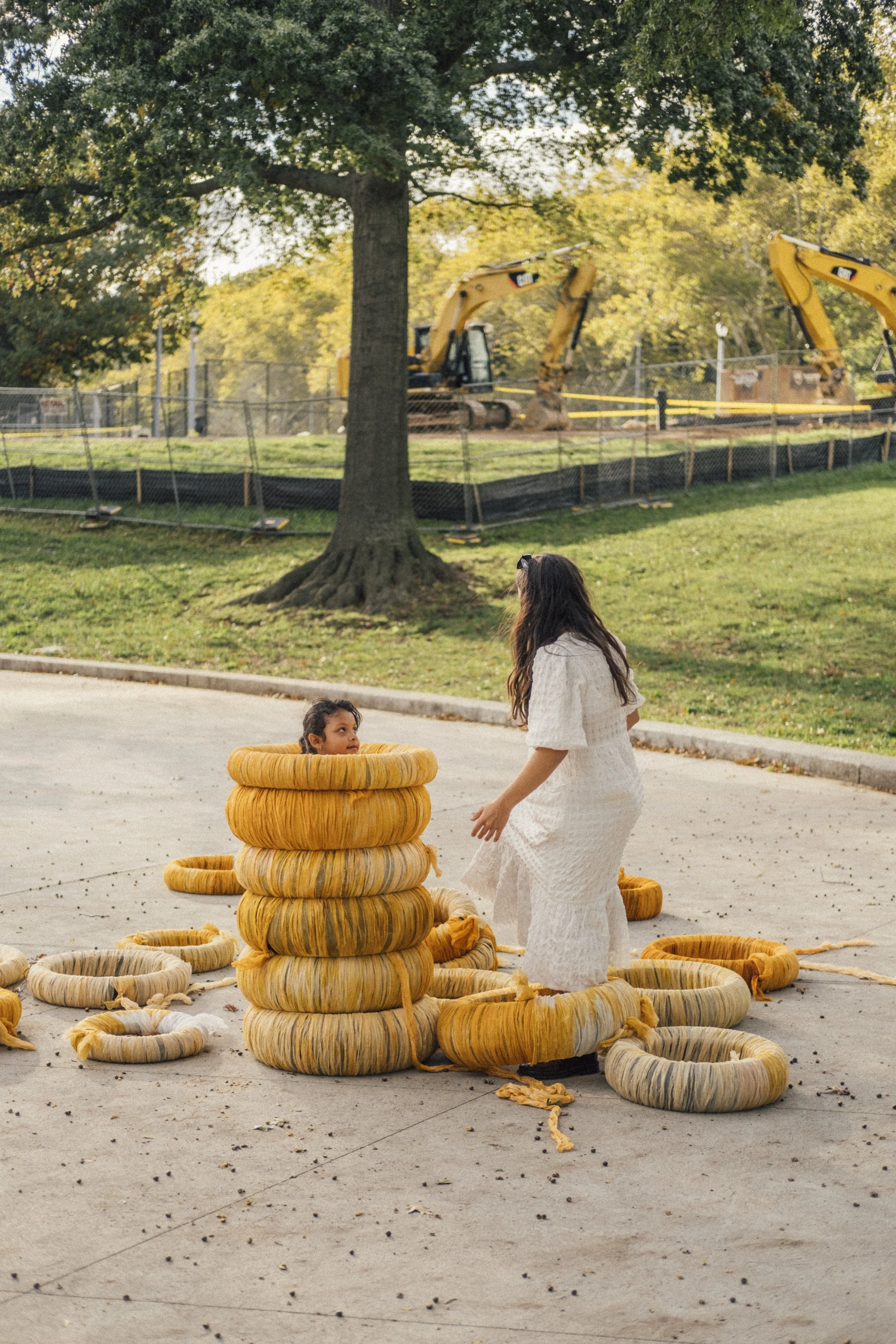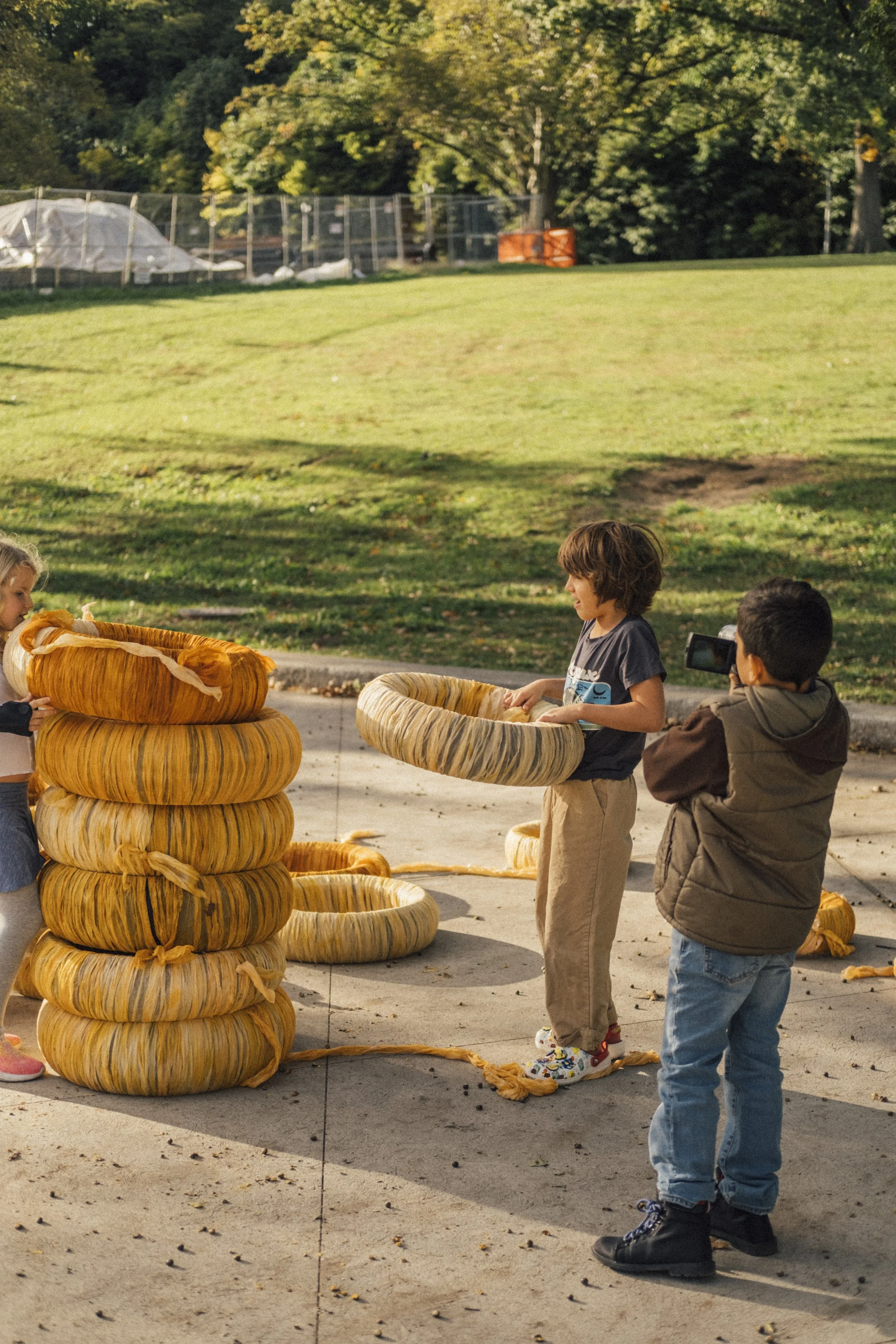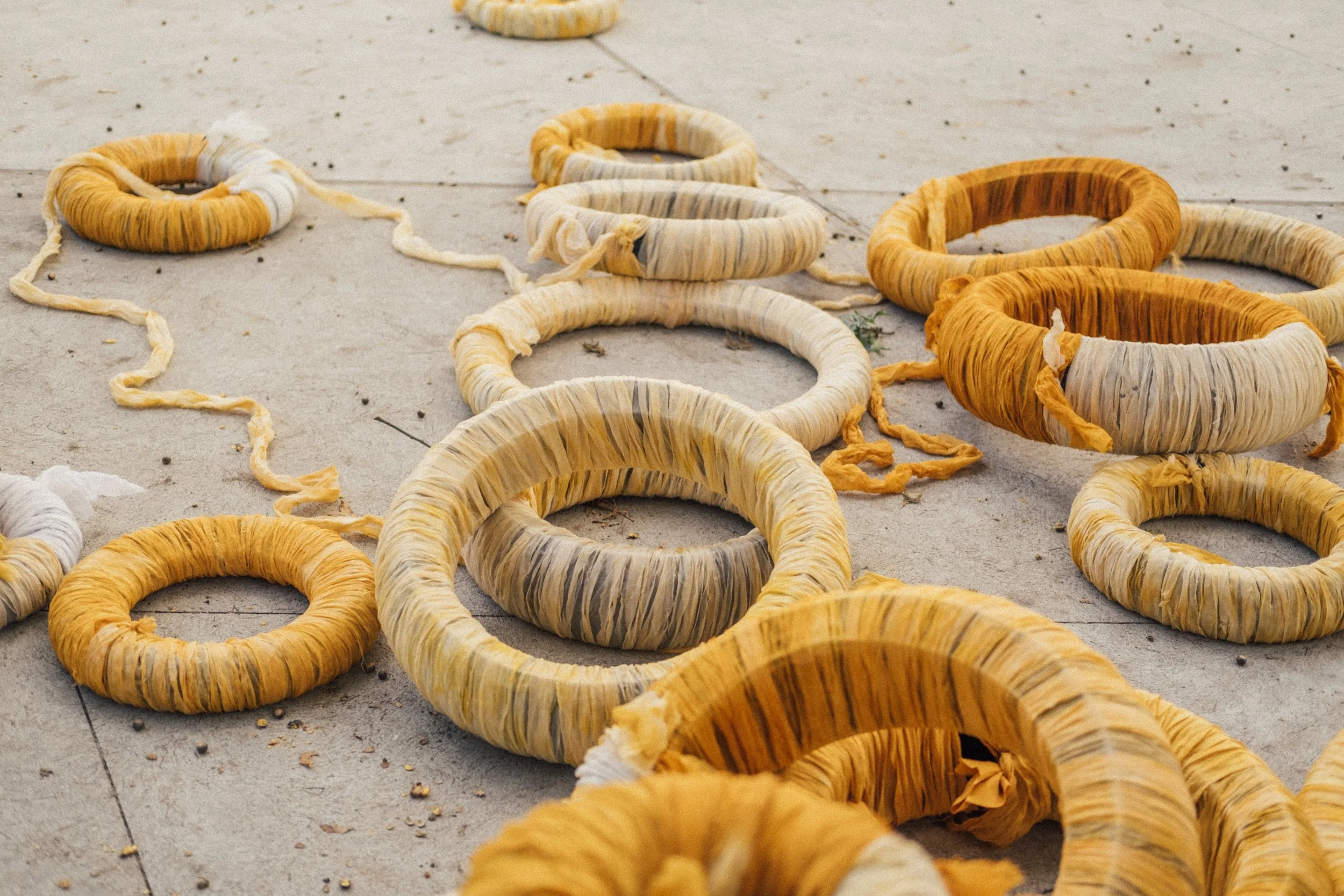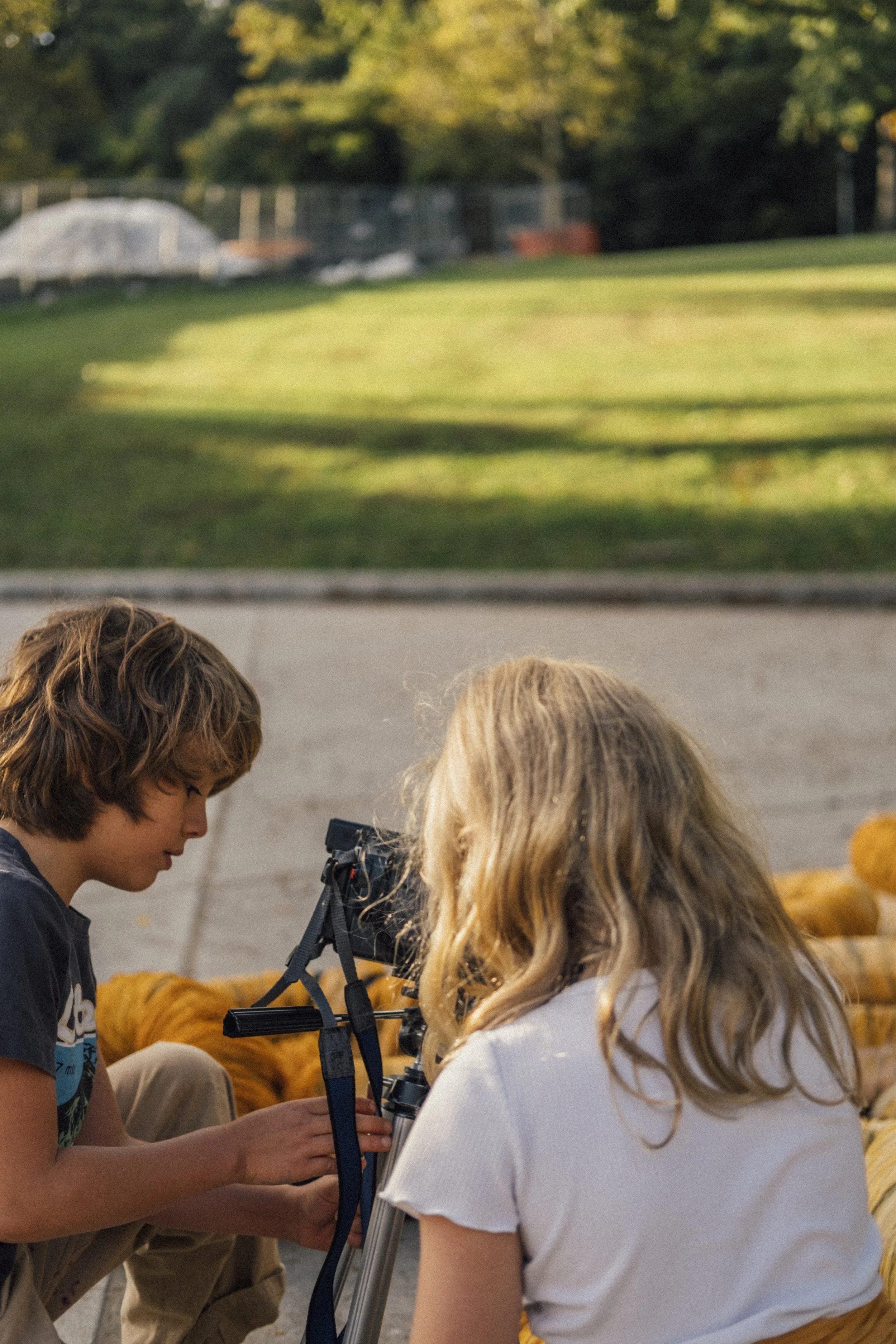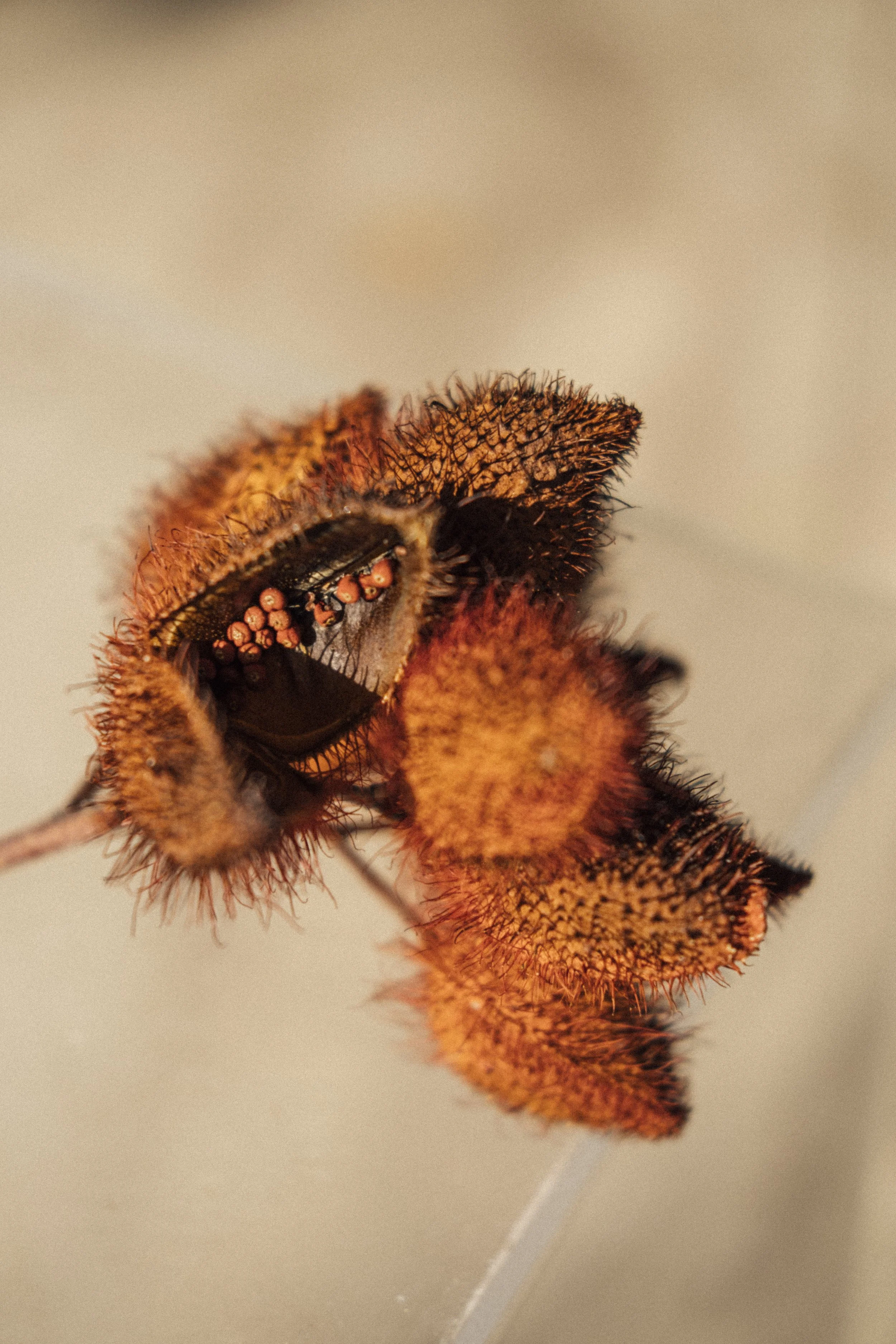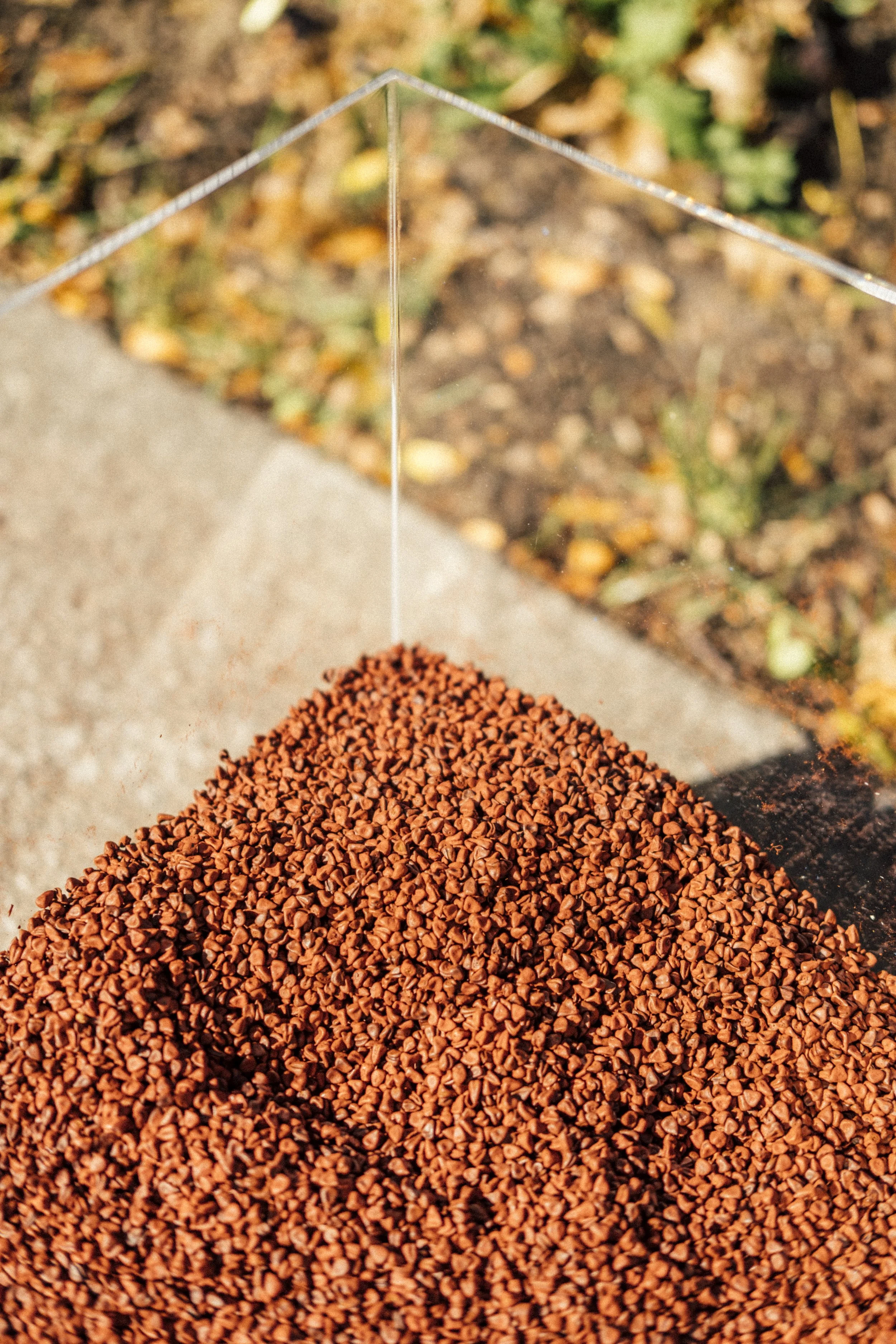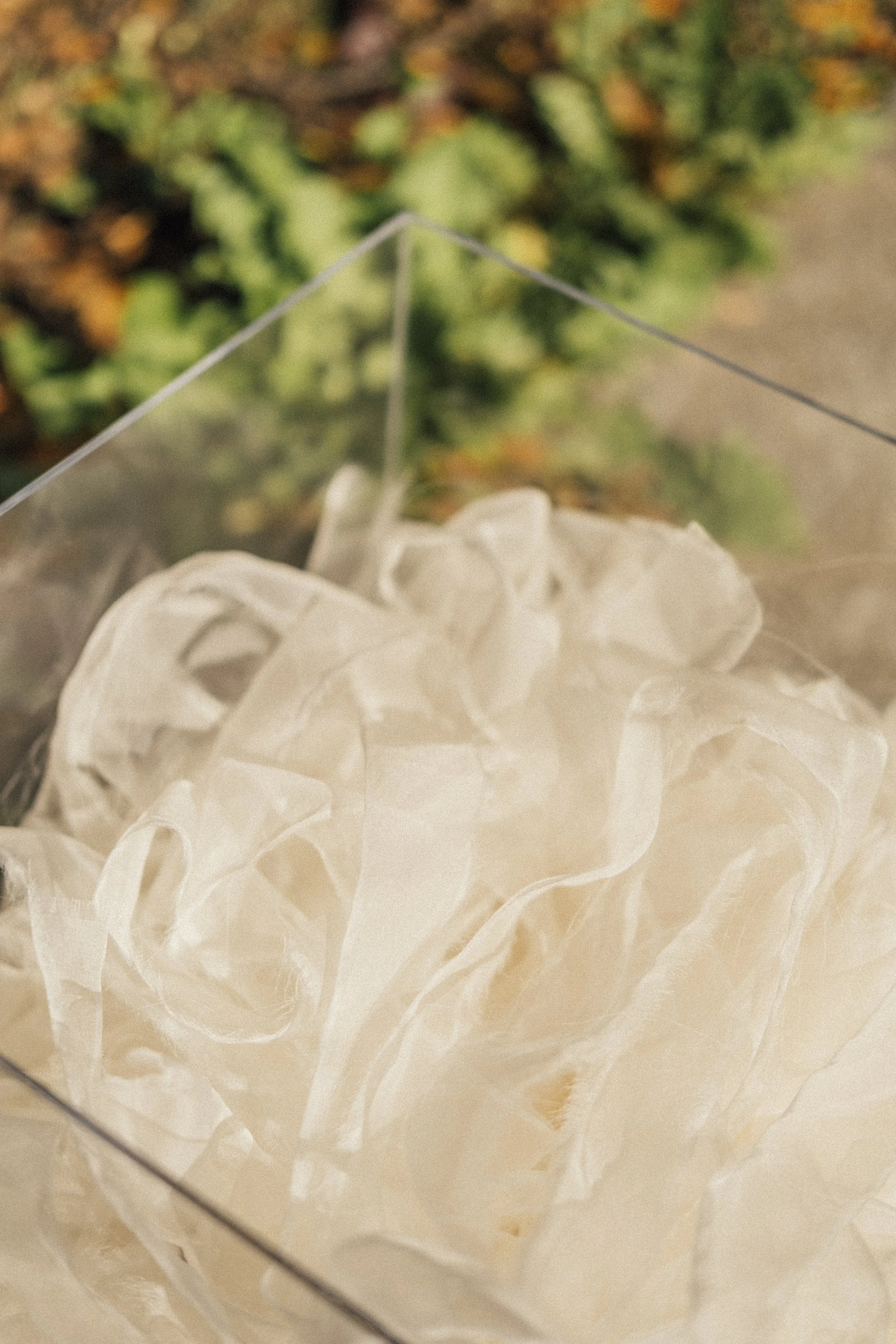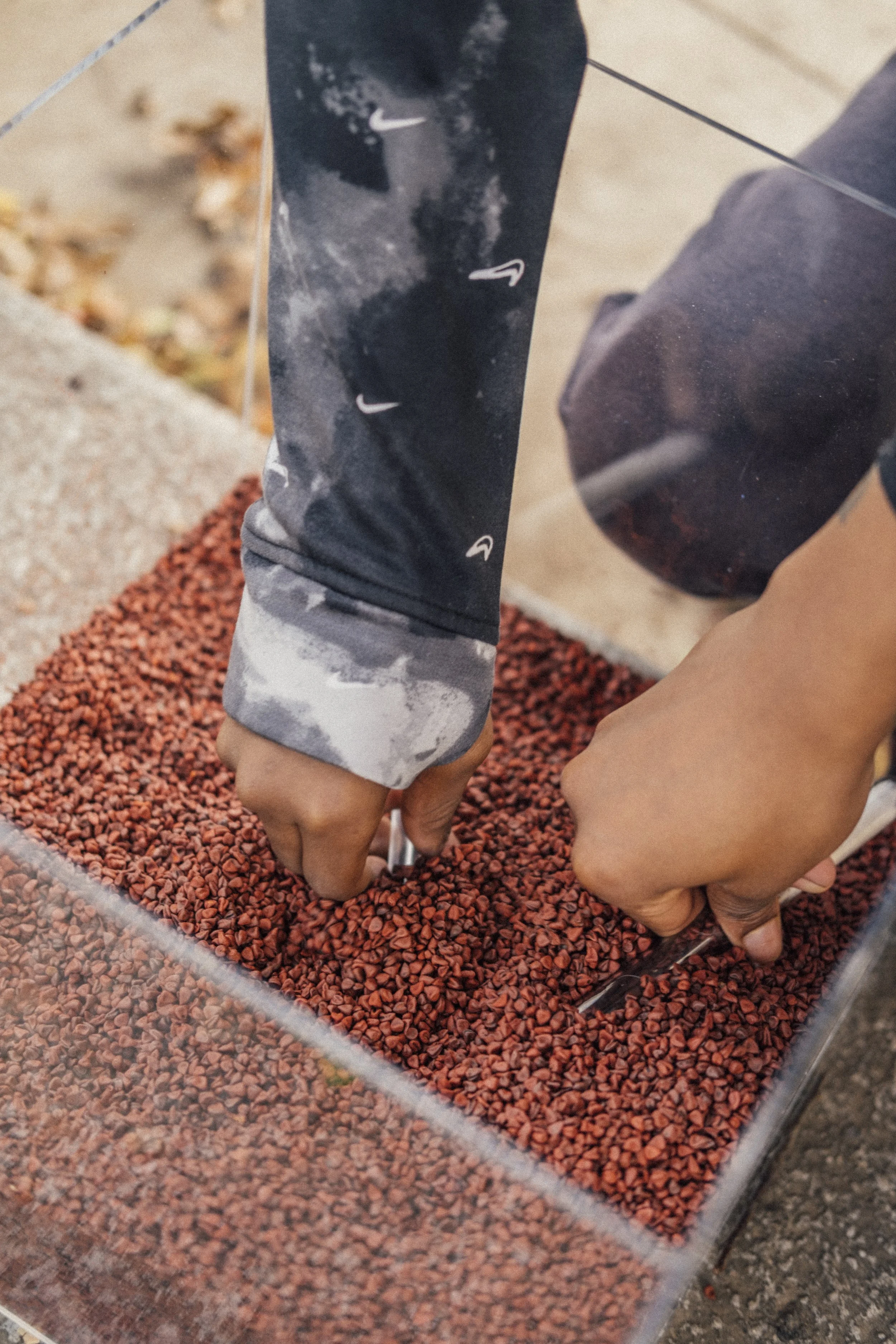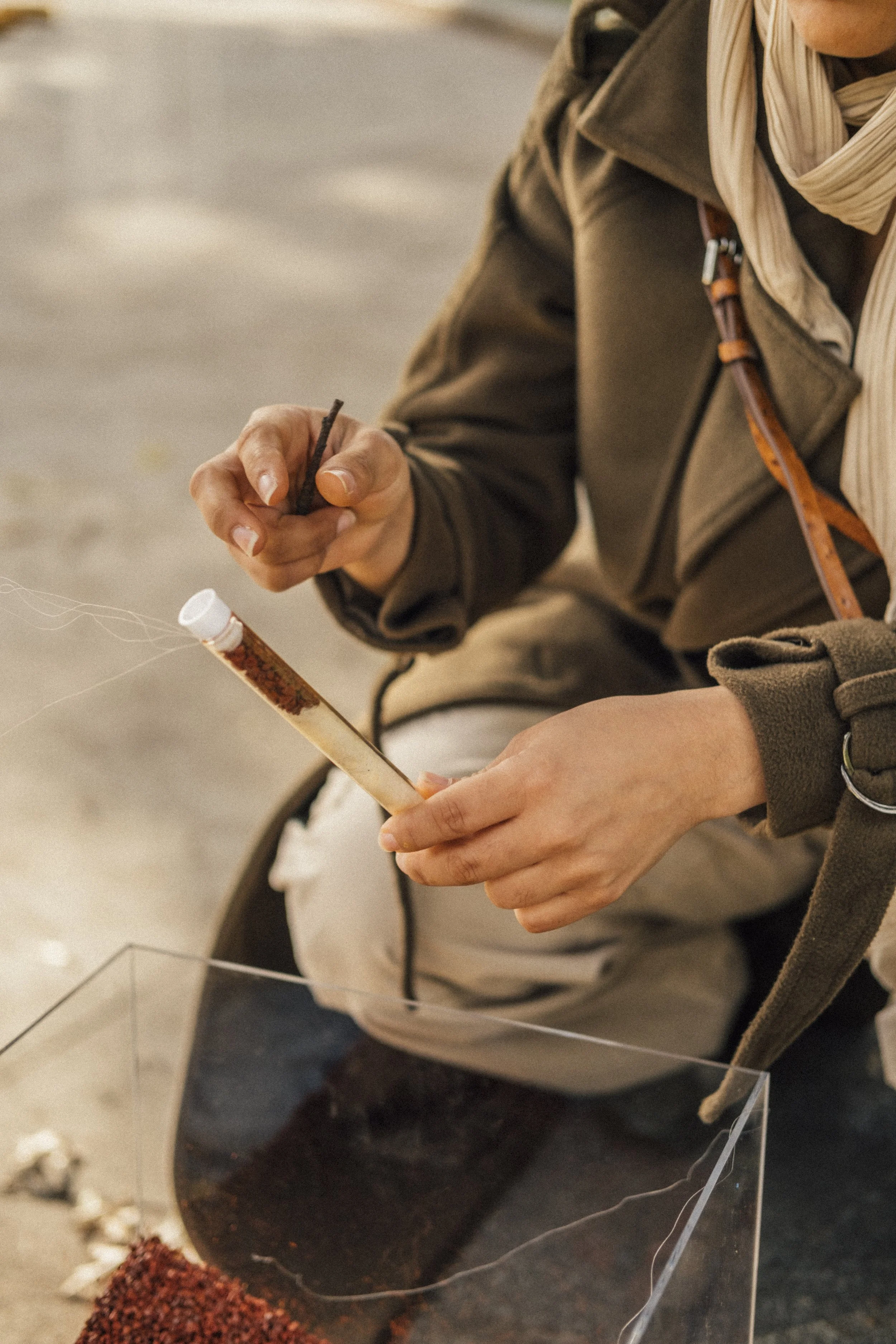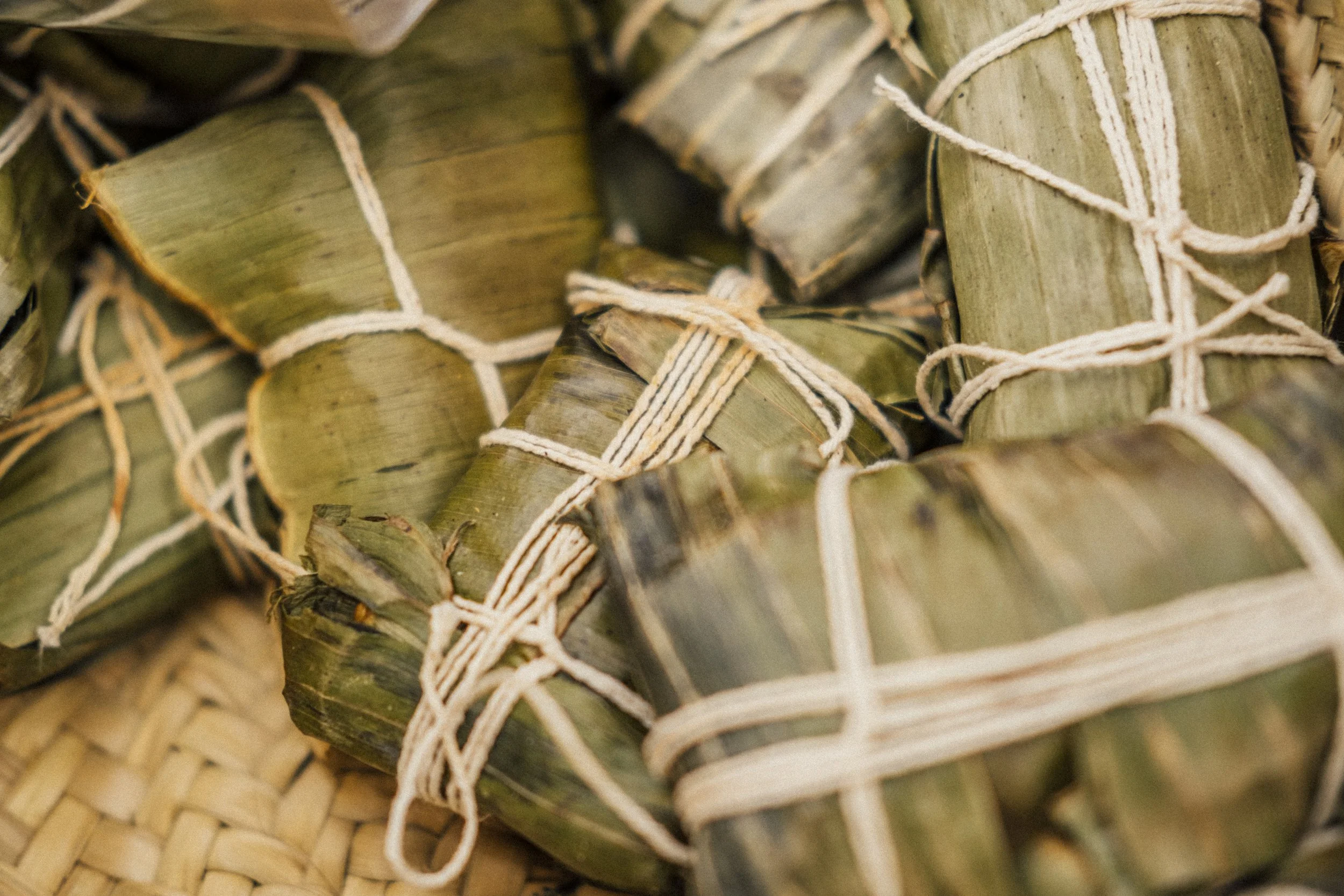
Onoto is Home
Participatory public-art installation at Highland Park. Tires gifted by a bike-repair shop owned by a Dominican family covered in fabrics dyed with seeds from onoto (achiote), an important plant in Latin American collective-consciousness.
Developed with a Queens Arts Fund Grant for New York Textile Month.
All photos by Griffin Moore unless otherwise noted.
Video & Posters by María Elena Pombo.
Onoto is Home
Onoto
[noun, Spanish]
Tree native to the American continent of short height with oval, fleshy fruit that contains many seeds.
Onoto is Home is an ongoing project exploring collectively this plant as a vehicle for conversations around history, language, memory, and more.
Historically used for ritualistic and food purposes among different indigenous groups from the Amazon to Central America, Onoto has both historical and contemporary importance across the Americas, regardless of boundaries and/or language. For this reason, it is known by different names, all coming from different indigenous languages within the continent. From its scientific name, Bixa Orellana, to urucú, used in Brazil, Paraguay and Bolivia, which comes both from guaraní (uruku) and tupí (urucum). To onoto and annatto, used in Venezuela and the USA, both coming from carib (annatto). To achiote, used primarily in Central America, coming from náhuatl (āchiyōtl). Bija, used in Dominican Republic, and more. In contemporary times, the plant is used primarily as a food colorant for different foods across different countries. From hallacas in Venezuela, to cochinita pibil in Mexico, velveeta cheese in the USA, and more. A less known property of this plant is its ability to embed color onto textile.
Works for the project include seeds obtained from three different locations across the Caribbean and South American. Seeds gifted by Leila Mattina, co-founder of Trama Antillana in Aibonito (Puerto Rico) in December 2022. Seeds gifted in January 2023 by Imeru Castro, from the Pemón community in Canaima (Venezuela). Seeds obtained via Régulo Reyes in Cabimas in January 2023, of farmers in Valera (Venezuela). Thank you Leila, Imeru, and Régulo. Further thanks to Alberto and the Primo Autobody Repair team.
The name for Onoto is Home comes from a 2019 conversation with London-based Venezuela Marcos Raúl Cabrera who is part of this ongoing collaboration. Gracias mil a Marcos. Further thanks to José Vicente Henriquez, Elvira Eloisa Blanco, Dulcina Abreu, Steve Maldonado Silvestrini, Alejandro Ribadaneira, Andres Altamirano, Tatiana Godoy Betancur, Rosa Romero García, Mariana Gatti, Helena Sasseron, Paula Turmina, Griffin Moore, and many more who have engaged in talking and thinking about this plant since vintage times, teaching me different names for it, different uses, different histories, different stories, and more.
Installation Photos
Onoto is Home (2023). Gifted tires, deadstock silk organza dyed with onto seeds. Variable dimensions: 60 tires, each ranging from 10"x10"x5" to 30"x30"x10"
Participation Photos
Visitors in the park where invited to play with the installation.
Workshop Station
A station with the plant, its seeds, fabric and testing tube. To make their own register of the color yielded by the onto plant.
Hallacas
Hallacas are prepared by families across Venezuela every year for Christmas in a dish that celebrates the country’s hybrid identity. Banana leaves wrap corn dough (dyed with onoto seeds) that contains a stew with multiple ingredients that depend on every family and region (capers, almonds, raisins, onion, pepper, chicken, pork, chicken, etc.). The ingredients represent, in order, the African, Indigenous, and Spanish heritage of the country.
For Onoto is Home I prepared vegan versions for everyone to try.

















